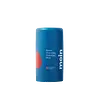What's inside
What's inside
 Key Ingredients
Key Ingredients

 Benefits
Benefits

 Concerns
Concerns

 Ingredients Side-by-side
Ingredients Side-by-side

Centella Asiatica Leaf Extract
Skin ConditioningButylene Glycol
HumectantGlycerin
HumectantDimethicone
EmollientCaprylic/Capric Triglyceride
MaskingGlycereth-26
HumectantNiacinamide
SmoothingCetearyl Glucoside
Emulsifying1,2-Hexanediol
Skin ConditioningHydroxyacetophenone
AntioxidantCetearyl Alcohol
EmollientCyclopentasiloxane
EmollientSorbitan Olivate
EmulsifyingCarbomer
Emulsion StabilisingPEG-100 Stearate
Glyceryl Stearates
EmollientMethylpropanediol
SolventTriethanolamine
BufferingAllantoin
Skin ConditioningPropylene Glycol
HumectantSodium Hyaluronate
HumectantDisodium EDTA
Tocopherol
AntioxidantStephania Tetrandra Root Extract
Skin ConditioningHydrogenated Lecithin
EmulsifyingEctoin
Skin ConditioningHexylene Glycol
EmulsifyingStearic Acid
CleansingCholesterol
EmollientCeramide NP
Skin ConditioningUndaria Pinnatifida Extract
Skin ConditioningNelumbo Nucifera Seed Extract
AntimicrobialHydrolyzed Hyaluronic Acid
HumectantHydroxypropyltrimonium Hyaluronate
Sodium Acetylated Hyaluronate
HumectantHyaluronic Acid
HumectantHydrolyzed Sodium Hyaluronate
Skin ConditioningPotassium Hyaluronate
Skin ConditioningSodium Hyaluronate Crosspolymer
HumectantCeramide EOP
Skin ConditioningCeramide AP
Skin ConditioningMadecassoside
AntioxidantChlorella Vulgaris Extract
Skin ConditioningTorreya Nucifera Seed Oil
EmollientPanthenol
Skin ConditioningDimethylsilanol Hyaluronate
HumectantCentella Asiatica Extract
CleansingCentella Asiatica Leaf Extract, Butylene Glycol, Glycerin, Dimethicone, Caprylic/Capric Triglyceride, Glycereth-26, Niacinamide, Cetearyl Glucoside, 1,2-Hexanediol, Hydroxyacetophenone, Cetearyl Alcohol, Cyclopentasiloxane, Sorbitan Olivate, Carbomer, PEG-100 Stearate, Glyceryl Stearates, Methylpropanediol, Triethanolamine, Allantoin, Propylene Glycol, Sodium Hyaluronate, Disodium EDTA, Tocopherol, Stephania Tetrandra Root Extract, Hydrogenated Lecithin, Ectoin, Hexylene Glycol, Stearic Acid, Cholesterol, Ceramide NP, Undaria Pinnatifida Extract, Nelumbo Nucifera Seed Extract, Hydrolyzed Hyaluronic Acid, Hydroxypropyltrimonium Hyaluronate, Sodium Acetylated Hyaluronate, Hyaluronic Acid, Hydrolyzed Sodium Hyaluronate, Potassium Hyaluronate, Sodium Hyaluronate Crosspolymer, Ceramide EOP, Ceramide AP, Madecassoside, Chlorella Vulgaris Extract, Torreya Nucifera Seed Oil, Panthenol, Dimethylsilanol Hyaluronate, Centella Asiatica Extract
Caprylic/Capric Triglyceride
MaskingDicaprylyl Carbonate
EmollientShorea Stenoptera Seed Butter
EmollientOryza Sativa Bran Oil
EmollientOlus Oil
EmollientSilica
AbrasiveHelianthus Annuus Seed Wax
Skin ConditioningOryza Sativa Bran Wax
Skin ConditioningRhus Succedanea Fruit Wax
Helianthus Annuus Seed Oil
EmollientLinoleic Acid
CleansingPanthenol
Skin ConditioningOleic Acid
EmollientPalmitic Acid
EmollientStearic Acid
CleansingLinolenic Acid
CleansingTocopherol
AntioxidantAscorbyl Palmitate
AntioxidantCaprylic/Capric Triglyceride, Dicaprylyl Carbonate, Shorea Stenoptera Seed Butter, Oryza Sativa Bran Oil, Olus Oil, Silica, Helianthus Annuus Seed Wax, Oryza Sativa Bran Wax, Rhus Succedanea Fruit Wax, Helianthus Annuus Seed Oil, Linoleic Acid, Panthenol, Oleic Acid, Palmitic Acid, Stearic Acid, Linolenic Acid, Tocopherol, Ascorbyl Palmitate
Alternatives
Ingredients Explained
These ingredients are found in both products.
Ingredients higher up in an ingredient list are typically present in a larger amount.
This ingredient is an emollient, solvent, and texture enhancer. It is considered a skin-softener by helping the skin prevent moisture loss.
It helps thicken a product's formula and makes it easier to spread by dissolving clumping compounds.
Caprylic Triglyceride is made by combining glycerin with coconut oil, forming a clear liquid.
While there is an assumption Caprylic Triglyceride can clog pores due to it being derived from coconut oil, there is no research supporting this.
Learn more about Caprylic/Capric TriglyceridePanthenol is a common ingredient that helps hydrate and soothe the skin. It is found naturally in our skin and hair.
There are two forms of panthenol: D and L.
D-panthenol is also known as dexpanthenol. Most cosmetics use dexpanthenol or a mixture of D and L-panthenol.
Panthenol is famous due to its ability to go deeper into the skin's layers. Using this ingredient has numerous pros (and no cons):
Like hyaluronic acid, panthenol is a humectant. Humectants are able to bind and hold large amounts of water to keep skin hydrated.
This ingredient works well for wound healing. It works by increasing tissue in the wound and helps close open wounds.
Once oxidized, panthenol converts to pantothenic acid. Panthothenic acid is found in all living cells.
This ingredient is also referred to as pro-vitamin B5.
Learn more about PanthenolStearic Acid is a fatty acid. It is an emollient, emulsifier, and texture enhancer.
As an emollient, stearic acid helps soften skin. It aids the skin's protective barrier by preventing water loss. It also provides a gentle cleansing effect without stripping away natural oils.
Stearic acid may also be used to enhance the texture of products. It can add volume and stabilize ingredients such as water and oil. This can help water and oil ingredients from separating.
Sources of stearic acid include animal or vegetable fats/oils such as coconut or shea. It can be naturally found in butter, cocoa butter, shea butter, vegetable fats, and animal tallow.
This ingredient may not be Malassezia folliculitis, or fungal-acne safe.
Learn more about Stearic AcidTocopherol (also known as Vitamin E) is a common antioxidant used to help protect the skin from free-radicals and strengthen the skin barrier. It's also fat soluble - this means our skin is great at absorbing it.
Vitamin E also helps keep your natural skin lipids healthy. Your lipid skin barrier naturally consists of lipids, ceramides, and fatty acids. Vitamin E offers extra protection for your skin’s lipid barrier, keeping your skin healthy and nourished.
Another benefit is a bit of UV protection. Vitamin E helps reduce the damage caused by UVB rays. (It should not replace your sunscreen). Combining it with Vitamin C can decrease sunburned cells and hyperpigmentation after UV exposure.
You might have noticed Vitamin E + C often paired together. This is because it is great at stabilizing Vitamin C. Using the two together helps increase the effectiveness of both ingredients.
There are often claims that Vitamin E can reduce/prevent scarring, but these claims haven't been confirmed by scientific research.
Learn more about Tocopherol